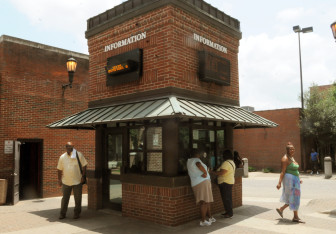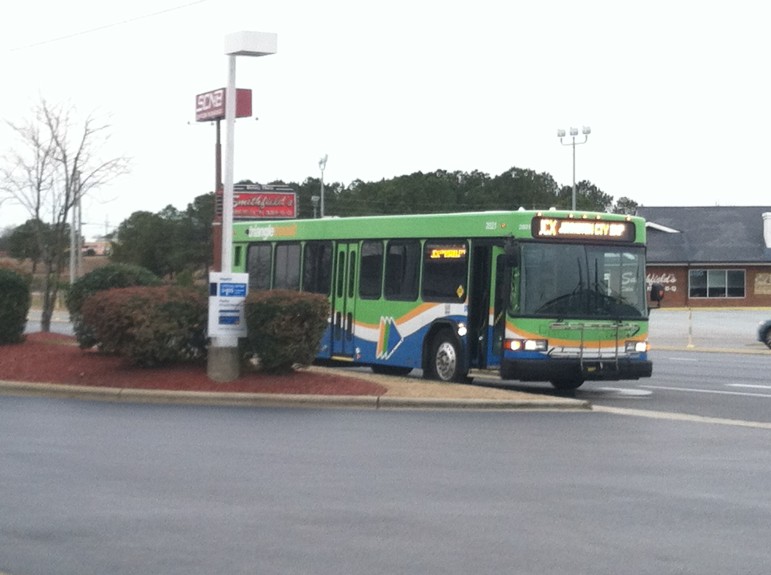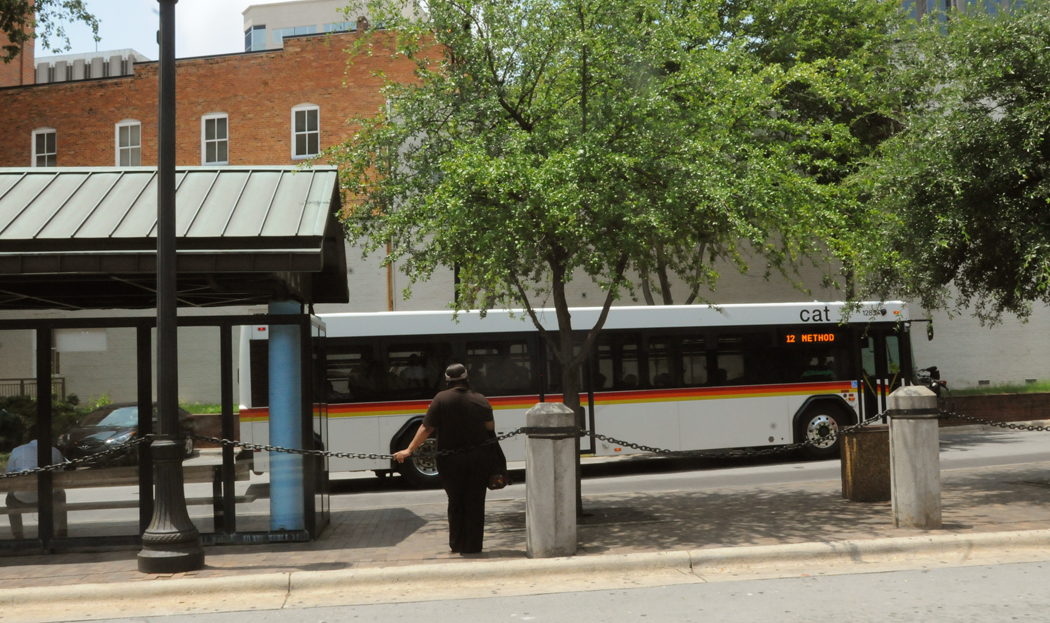The second phase of a bus-fare hike has been pushed back until 2016, but riders could still see a 25-cent increase this year.
Capital Area Transit (CAT) and Triangle Transit Authority (TTA) will hold public hearings on the proposed rate hikes on Monday, May 5 and Wednesday, May 21, respectively. The fare increases are expected to keep up with escalating operating costs and pay for new services and buses.

Karen Tam / Raleigh Public Record
For local cash rides, fares could increase from $1 to $1.25 in 2014 and then again to $1.50 in 2016. Regional rides could increase from $2.00 to $2.25 in 2014 and then again to $2.50 in 2016.
Originally, the second phase of the increase was set to take place in 2015. Raleigh transit planner David Walker said that a federal review of the rate schedule recommended pushing the second phase out a year.
A Title VI review is required for any program that receives federal funding to ensure that no group or person is overly burdened by the proposed changes.
“Financially, potentially, it could be too much, too quick,” Walker said.
If approved by the Triangle Transit board of trustees and the Raleigh City Council, the first round of increases will start this fall.

Ariella Monti / Raleigh Public Record
The increases are the first in about eight years for both transit organizations, which took a hit at the height of the recession. Although fare-box rates, the amount collected from riders, have remained stagnant, operating costs have continued to rise.
The increase is projected to bring in an additional $1.4 million annually.
Raleigh’s transit administrator David Eatman said that the Raleigh Transit Authority’s main objective is to advance its short-range transit plan, but ultimately how the funding is used is up to the City Council.
“There are more things than just transit, we realize that,” he said.
Eatman said that it will take a couple of years for the increase in funding to be realized.
“You will always have some decrease in ridership due to a fare increase,” he said. “Usually that does rebound over time.”
CAT’s total operating cost is about $19.3 million, but only about 15 percent is recovered from riders.
Eatman said that the fare increase will bring CAT up to about 20 percent recovery. In a peer-city comparison, Eatman said the median is about 21 percent.
The remaining funding comes from federal, state and local tax dollars.
CAT Route Changes in June
Regardless of the fare hike outcome, CAT riders will see some increased service starting June 1.
Route 1 along Capital Boulevard and Route 15 to WakeMed will have increased service, reducing headways to 15 minutes during the day.
Capital Area Transit (CAT) plans to make adjustments to many bus routes effective June 1, 2014.
